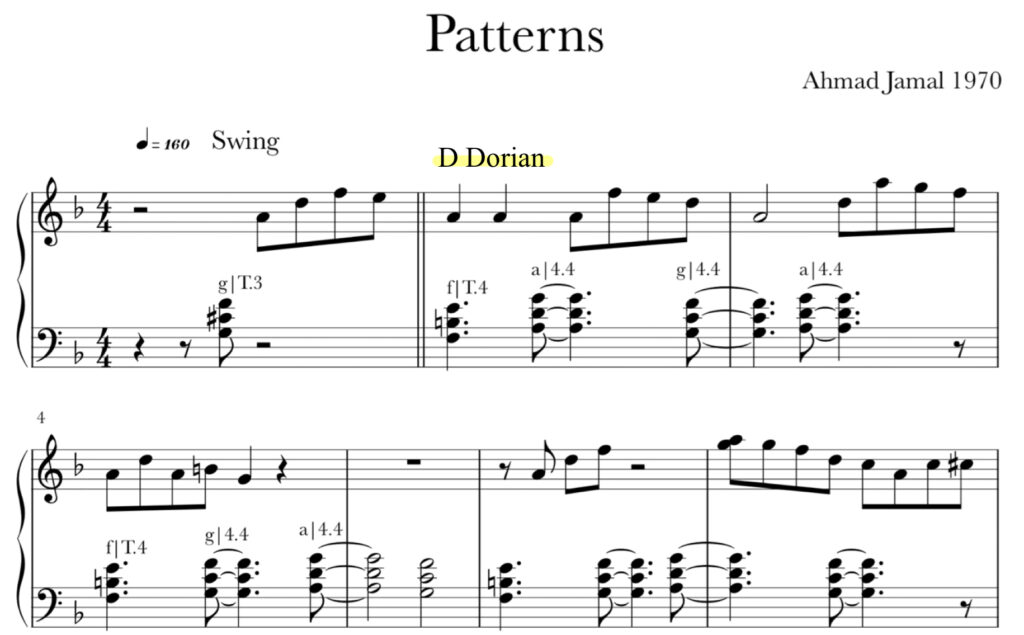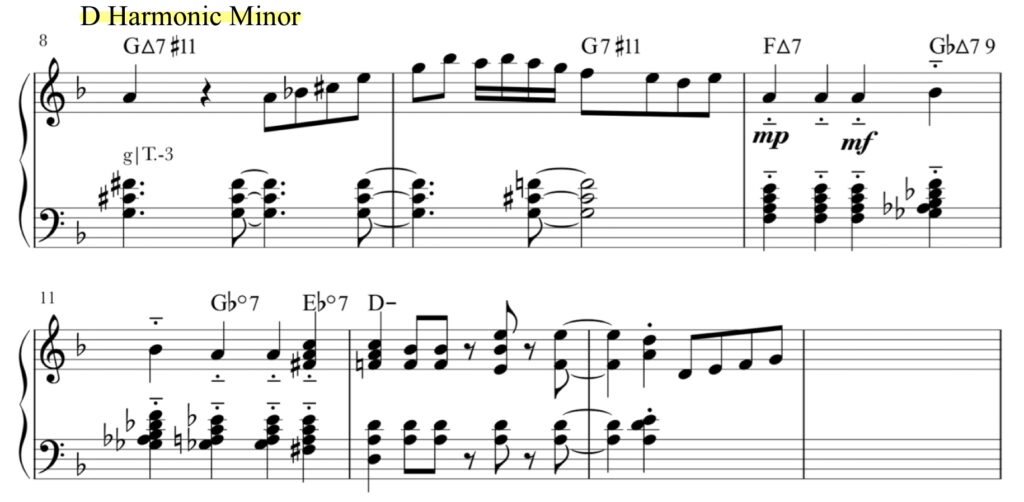Ahmad Jamal - 1970
Ahmad Jamal’s composition ’Patterns’ is from the 1970 album ‘The Awakening’. We offer here a short excerpt that clearly demonstrates some important techniques that evolved during the 1960s.


In 1955 Ahmad Jamal began his first album with a song called ‘New Rhumba’ (Link). With the very first chord he foreshadowed one of the important developments of 1960’s Jazz – Chords built on Fourths. Word has it that it was a later Jamal recording, an arrangement of Morton Gould’s ‘Pavane’, that caught the ear of Miles Davis and spawned “Modal Jazz”. Whether this is accurate or not, Jamal’s very popular approach to Jazz unquestionably influenced Miles Davis and probably John Coltrane.
The 12 bar excerpt above demonstrates with great clarity how “Modal Jazz” works. I have included links to pages that explore the points being made in more detail.
(1) The first 6 bars are in the D Dorian mode (d,e,f,g,a,b,c) with it’s characteristic lowered 6th degree, b natural (Link).
(2) The melody is accompanied with a series of free flowing chords built with fourths and tritones. These chords could be named with traditional labels (for instance the first chord after the double bar could be called “F,#11″ but we prefer describing the chord precisely because in modal jazz the chords do not operate traditionally. The “f|T.4” means a three note stack with a f bass and then an interval of a tritone and then a fourth (Link).
(3) Notice how Jamal enters the modal section (bar 1) with a chord built with a tritone and third (g|T.3) and exits the Dorian passage (bar 8) with a chord made of a tritone and a minor third (g|T.-3). These “almost-quartal-chords” act as transition chords before he goes full tonal in bar 10.
(4) At the end of bar 7 he plays a c# making it crystal clear he is moving from D Dorian to D Harmonic Minor (d,e,f,g,a,b flat, c sharp) (Link). And, sure enough, he runs up part of the scale in bar 8. Listen closely to how the Dorian section seems to stay in one tonal area while the Minor area “progresses” through the chords.
(5) Jamal playfully switches, with emphasis (!), to the relative major “F’ in bar 10 then he plays a tritone substitution of the V of F (Gb) (see ‘Dominant Substitutions’ section here Link). Then he switches to the diminished 7th to set up the return to D minor*.
*Note: A diminished seventh chord is symmetrical. The inversions of a diminished seventh chord turns into a different diminished seventh. For example invert the Gbdim7 once and you get an Adim7, invert that and you get a Cdim7, invert it and get a Ebdim7. Very handy for modulations. See Diminished Seven section here – Link.
